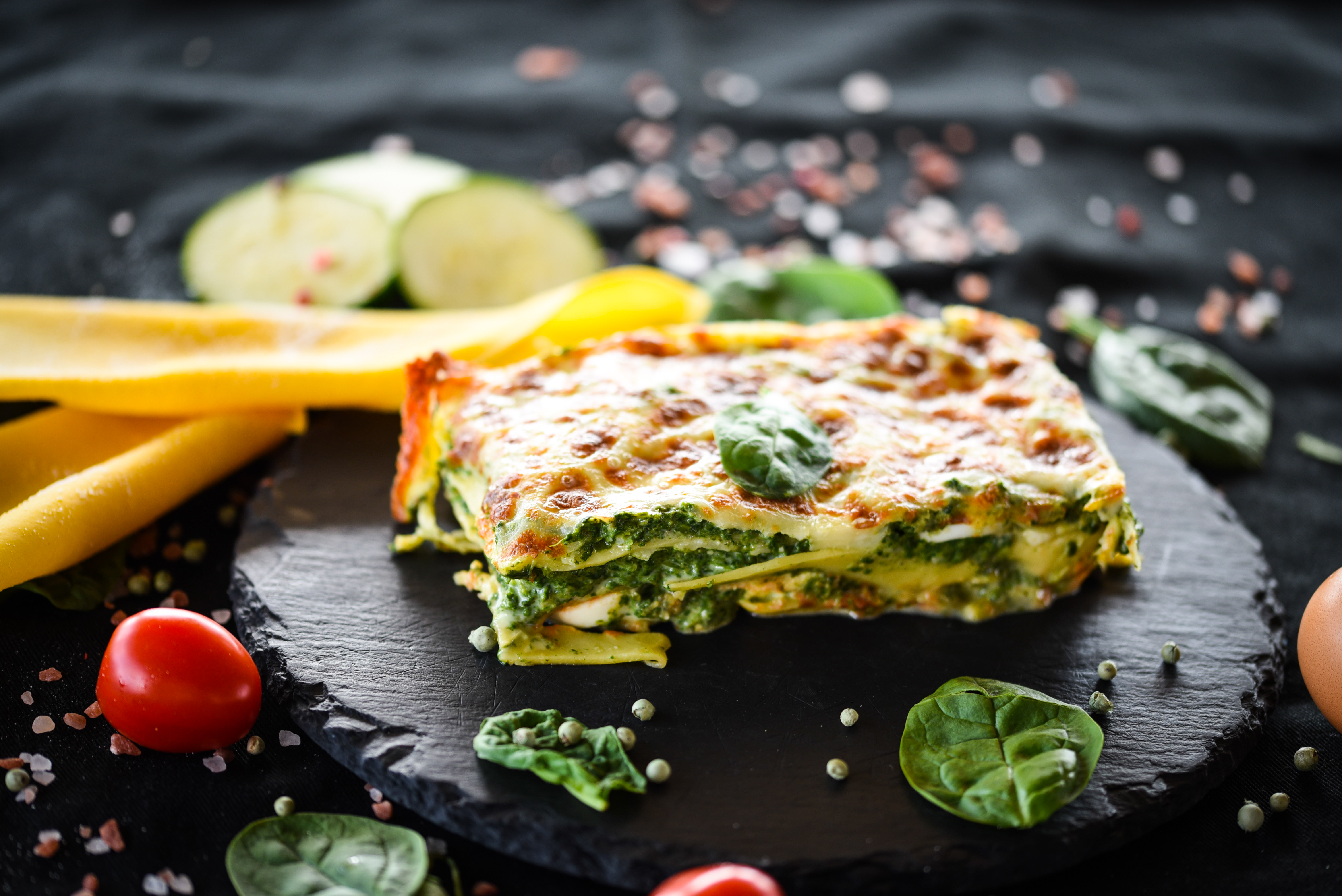Vegetable lasagne: recipe to your liking
The vegetable lasagne recipe has arrived to delight you with its delicious flavour. We show you how to prepare it using your favourite vegetables. To your liking!
on today's menu
Share

The vegetable lasagne is one of those dishes that never goes out of fashion, and rightly so: it is healthy, it allows you to use different vegetables and is very easy to make. If you still don’t have the recipe for vegetable lasagne in your recipe book, we’re certain that, after this article, you won’t hesitate to include it.
In fact, what makes lasagne so special is the type of pasta used, which consists of layers of sheets which are alternated with ingredients. As with other pasta, the lasagne is very versatile and the vegetables can be mixed with meat or bolognaise sauce, for example. It can also be eaten as a first or second course, or as a main course which, in this case, can be quite filling.
We tell you how to make lasagne step by step. Take note!
Ingredients
- 9 lasagne sheets
- 1 courgette
- 2 carrots
- 4 sun-dried tomatoes in oil
- 2 spring onions
- 10 mushrooms
- 1 red pepper
- 700 ml milk
- 50 g flour
- 200 ml tomato sauce
- 125 g cured sheep’s cheese
- extra virgin olive oil
- salt
- 1 teaspoon dried thyme
- 1 pinch nutmeg
- parsley
To make the lasagne, take the following steps:
1. Firstly, heat up 6 spoonfuls of oil in a large saucepan.
2. Then, cut the vegetables. First, chop the onions into cubes and add them to the pan. Do the same with the carrots, which should be cut into thin quarter slices and add these as well. Then remove the stalk and seeds from the pepper, peel it, cut it into cubes and add this to the pan too.
3. Fry the vegetables for 6-8 minutes.
4. Then it’s the courgette and the mushrooms. Wash the courgette, cut it into thin half circles and add it to the pan. Discard the mushroom stalks, rinse them, cut them in half and slice them, then add them to the pan as well.
5. Season and cook everything for 10-12 minutes until it is lightly fried, then chop the sundried tomatoes in oil and add these along with the thyme. Cook everything for 6-8 minutes more.
6. Put a large saucepan on the heat with plenty of water and a pinch of salt. When it begins to boil, put in the lasagne sheets one by one and boil them for the time indicated on the packet. When they are cooked, drain them so they are dry.

7. The irresistible bechamel sauce deserves its own space in this vegetable lasagne recipe. To make it, put 2-3 spoonfuls of oil to heat in a saucepan, add the flour and cook it. Then, add the milk a little at a time, stirring continuously, and cook the sauce for 6-8 minutes. Season it and add a little bit of nutmeg and a teaspoon of chopped parsley. Mix and put aside.
8. It is now time to build up the lasagne in an oven-proof dish. Put 3 sheets of lasagne and half the vegetables (the layer does not need to be very thick); another 3 lasagne sheets, the remaining vegetables and another 3 lasagne sheets. Cover with the béchamel sauce and pour over the tomato sauce forming lines along the length of the dish. Grate the cheese and sprinkle over the whole surface of the lasagne.
9. Lastly, put the lasagne in the oven and cook it until it is hot and the cheese is golden. What’s left to do after this? Just to enjoy it, of course.
Alternatively, the Thermomix vegetable lasagne is not difficult to make. Just adapt the ingredients to the speeds of the machine and chop them into similar sized pieces and cook for a similar amount of time as the more traditional recipe. Once again, finish by putting everything in a dish and placing this in the oven.

Variantions on the vegetable lasagne recipe
If you want to experiment further with this dish, there are other variations for the vegetable lasagne recipe that you can try.
For example, the vegetarian courgette lasagne. In this case, the courgette takes the place of the lasagne sheets and, instead of the bolognaise sauce, you can use textured soya. To make this dish, first make the bolognaise sauce with the soya, for which you need a fried tomato and bay leaf sauce. Cut the courgette into slices, fry until golden (so that it is not undercooked) and make the béchamel sauce (which can be made the same way as above but using vegetable milk, if desired). Build up the layers with all the ingredients as for the vegetable lasagne, bake it, and it’s ready to eat!
The vegetarian aubergine lasagne is very similar, and this can even be made as a vegan dish so that everyone can try it. In this recipe, the aubergine will replace the lasagne sheets. You can also use a marinara sauce (made with tomato, garlic, onion and Italian herbs), vegan ricotta cheese made from tofu and vegan parmesan cheese. Cut aubergine layers of 5mm thickness, sprinkle with salt and place them in a colander for around 15 minutes to remove excess water. Then wash them, dry them and cook them until they are golden. Lastly, repeat the process of building up the layers and the contents (the cheeses, the sauce, etc.) in an oven-proof dish.
Another alternative of the vegetable lasagne is a spinach lasagne. This time, you will need spinach, tomato sauce, béchamel, mozzarella and cheese. First, drain the mozzarella in a colander over a bowl. Then put the onion and garlic in a frying pan on a medium heat with a little olive oil. When they are lightly cooked, add the spinach and cook until it is thawed or cooked (depending on whether you have used fresh or frozen spinach). Season, add the tomato sauce and cook on a low heat for 10 minutes. Then cook the lasagne sheets and build layers with the ingredients in a dish. Add the mozzarella, the béchamel sauce and the cheese and… voilà!
All things considered, there is only one thing to say: hooray for lasagne!







